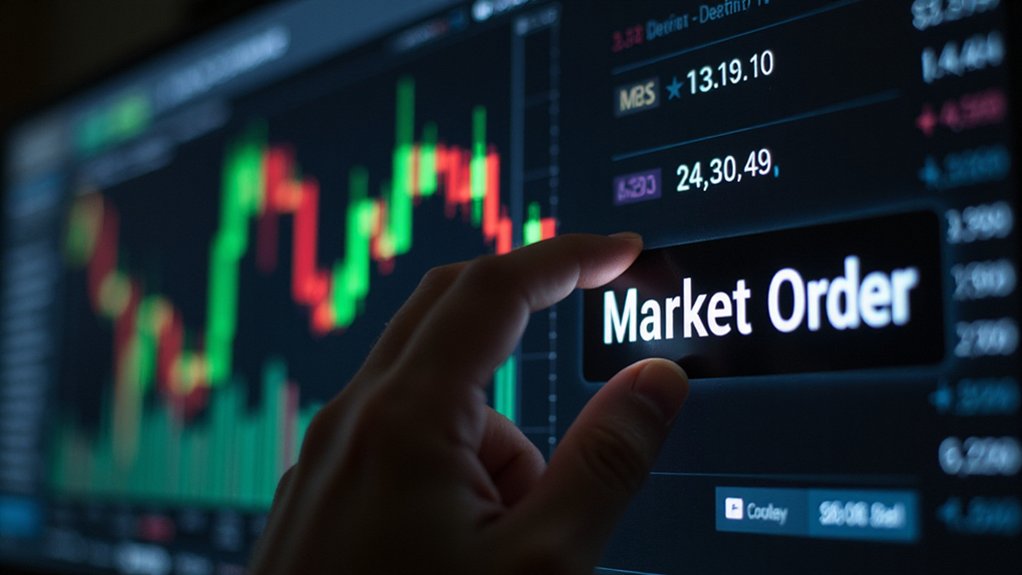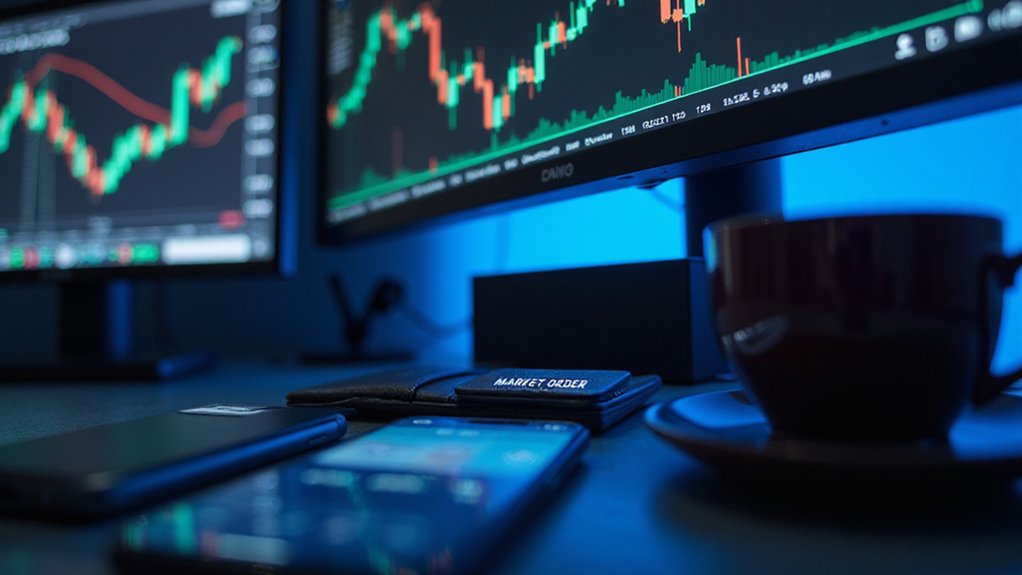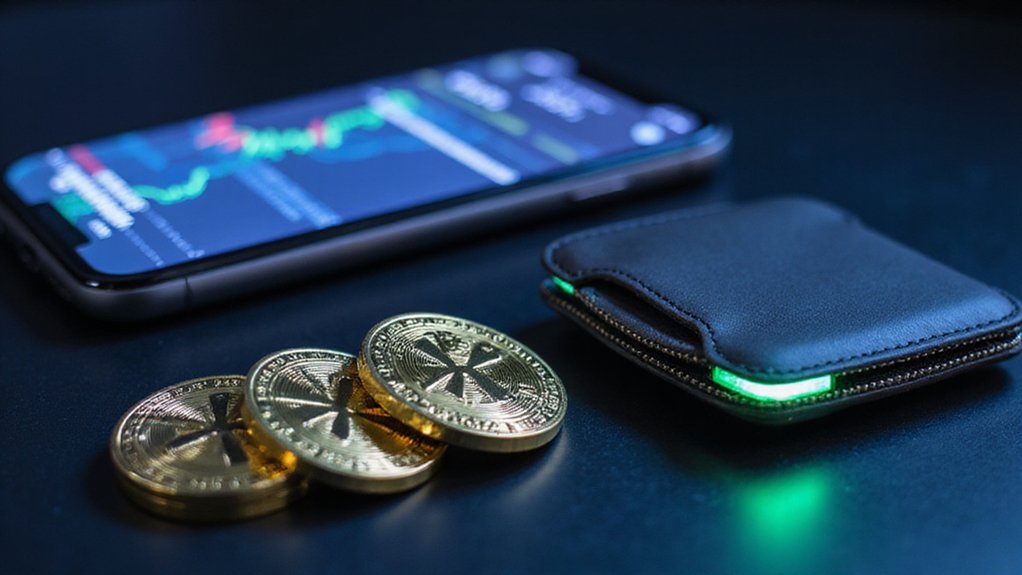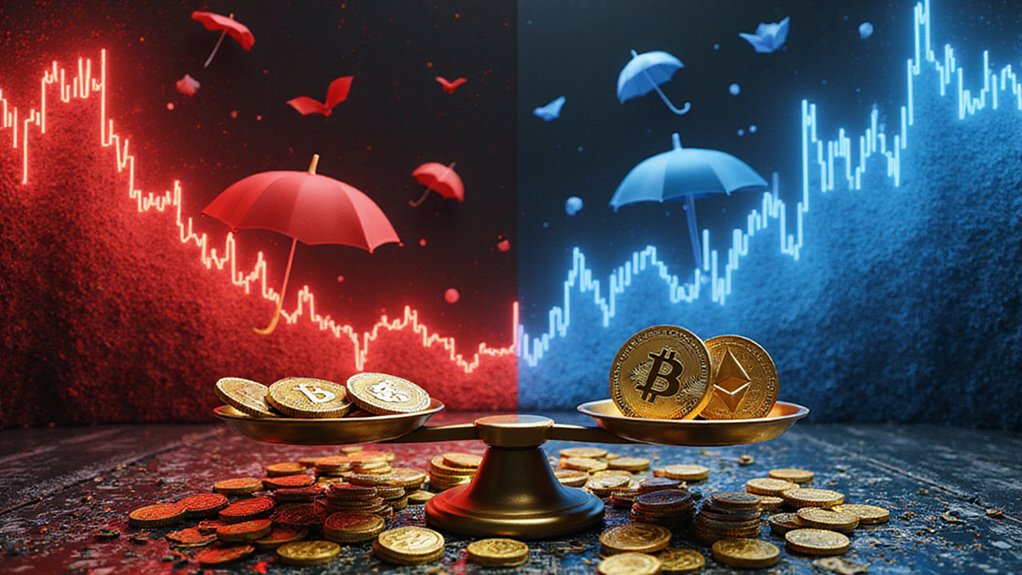A market order is the financial world’s equivalent of “I want it now”—instructions to buy or sell securities immediately at the current market price. Unlike limit orders (where price specification reigns supreme), market orders prioritize execution certainty over price control. They excel in liquid environments but can backfire spectacularly during volatility, delivering wildly different prices than expected. Paradoxically, their greatest strength—guaranteed execution—often becomes their most significant liability when markets become unhinged.

Why do some traders prioritize execution speed over price certainty? The answer lies in understanding the fundamental nature of market orders—those straightforward instructions to buy or sell securities immediately at whatever price the market currently offers. Unlike their more discriminating cousins (limit orders, with their insistence on specific price points), market orders embody the trading equivalent of “I want it now,” eschewing precision for immediacy.
Market orders shine brightest in liquid environments populated by high-volume securities like large-cap stocks and popular ETFs.
Market orders thrive in the fertile soil of high-volume securities, where liquidity transforms hasty transactions into elegant executions.
Their primary virtue—guaranteed execution—comes paired with their most significant limitation: price uncertainty.
The trader employing a market order effectively announces their prioritization of transaction completion over price optimization, a choice that can seem either brilliantly pragmatic or financially reckless depending on market conditions.¹
The strategic application of market orders typically occurs when traders face time-sensitive decisions requiring rapid market entry or exit.
Their simplicity—requiring no price specifications or constant monitoring—makes them the default selection for many investors, particularly those uninitiated in the nuances of order types.
However, this convenience bears costs, especially during volatile periods when execution prices may diverge dramatically from those observed when placing the order.
In cryptocurrency trading, market orders are commonly used for spot trading which involves the immediate buying or selling of assets at current market prices.
In less liquid markets, the repercussions of market orders can be particularly severe.
While a large-cap stock might see minimal slippage between expected and actual execution prices, thinly traded securities can experience dramatic price movements when market orders consume available liquidity at increasingly unfavorable levels.
These orders are typically filled immediately upon submission, trading price control for the certainty of execution.
Sophisticated traders typically reserve market orders for specific scenarios: urgent transactions, highly liquid securities, and situations where the psychological certainty of execution outweighs potential price disadvantages.
The rest of the time, they employ limit orders, stop orders, or more complex derivatives that offer greater control over execution parameters.
Most online brokers offer market orders as the default price type on their trading platforms, requiring only the security symbol, transaction direction, and quantity to execute.
Ultimately, the choice between market orders and alternatives reflects an investor’s risk tolerance, time horizon, and strategic objectives—a calculation as personal as it is financial.
¹The wisdom of this trade-off varies inversely with market volatility.
Frequently Asked Questions
How Do Market Orders Differ From Limit Orders?
Market orders and limit orders represent contrasting trading philosophies: the former executes immediately at prevailing market prices (prioritizing speed over price certainty), while the latter executes only at a predetermined price or better (valuing precision over immediacy).
Market orders shine in stable conditions but risk slippage during volatility; limit orders offer price protection but may never execute if the market doesn’t reach specified levels.
The choice between them reflects one’s priorities—immediacy versus price control.
Can Market Orders Be Canceled After Submission?
Market orders, unlike their more patient limit-order cousins, typically cannot be canceled after submission.
Once these instructions reach the exchange, they execute immediately at the prevailing market price—a financial point of no return, if you will.
While technically possible to attempt cancellation in the fleeting milliseconds between submission and execution, the chances of success border on the theoretical rather than practical.
Most brokerages make this limitation abundantly clear in their trading policies.
When Should I Avoid Using Market Orders?
Traders should avoid market orders during low liquidity periods (pre-market, after-hours, thinly-traded securities) where wider bid-ask spreads create execution risk.
Price-sensitive situations demand limit orders instead, as market orders offer zero price guarantees—rather alarming when one considers the potential for “wild prices.”
Large-quantity trades particularly suffer from market orders’ tendency to create self-inflicted price movement.
Finally, volatile conditions transform these convenient executions into financial roulette wheels, with earnings announcements and trading halts presenting particular hazards.
Do Market Orders Guarantee Execution Time?
Market orders do not guarantee execution time, despite their reputation for swiftness.
While typically executed promptly under normal conditions, timing remains subject to market volatility, order size, execution venue, and system capabilities.
SEC regulations, particularly absent of specific timing requirements, merely insist on honest advertising of execution speeds.
Sophisticated platforms may process orders in microseconds, yet external factors—particularly during turbulent trading sessions—can introduce unexpected delays.
Execution is assured; its precise timing is not.
Are Market Orders Suitable for Volatile Stocks?
Market orders are generally ill-suited for volatile stocks, where rapid price fluctuations can lead to significant slippage—that peculiar gap between expected and actual execution prices that haunts many a trader’s nightmares.
While these orders guarantee execution (though not time), they relinquish all price control—a questionable strategy when a stock might swing 5% between clicks.
For volatile securities, limit orders provide essential guardrails against the market’s more dramatic mood swings.









